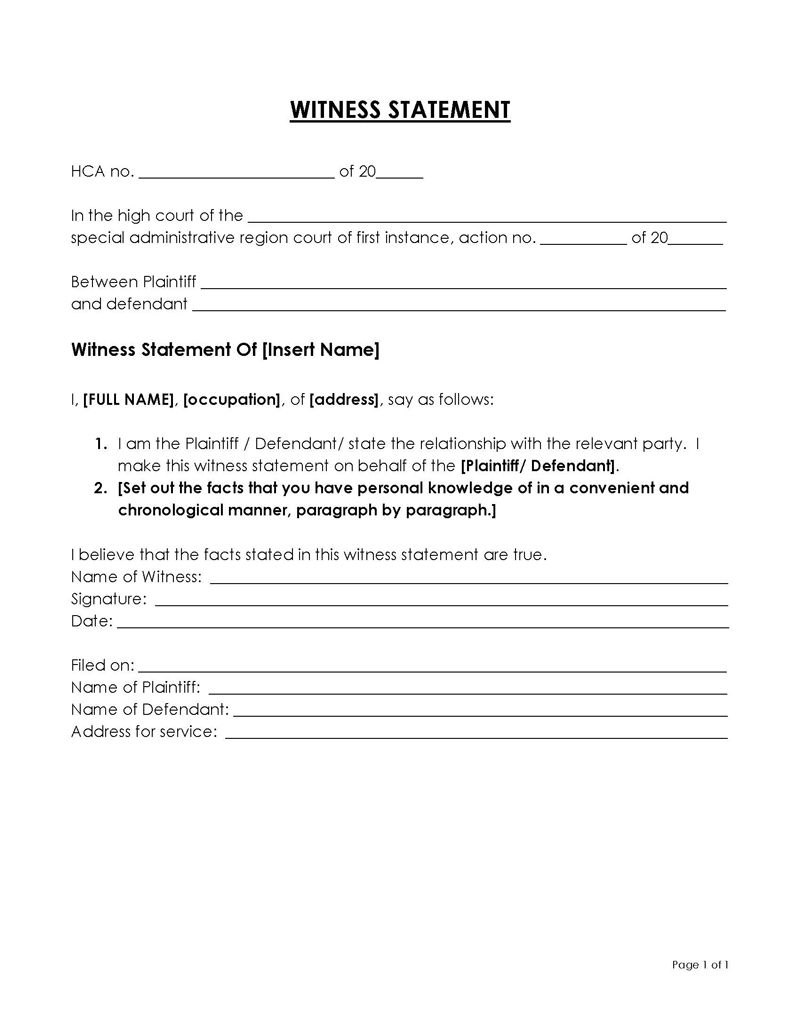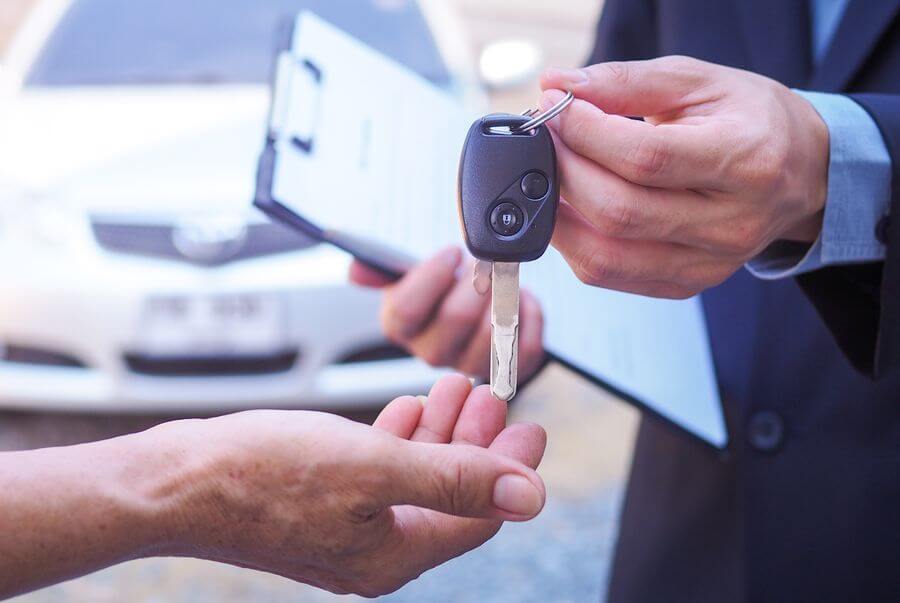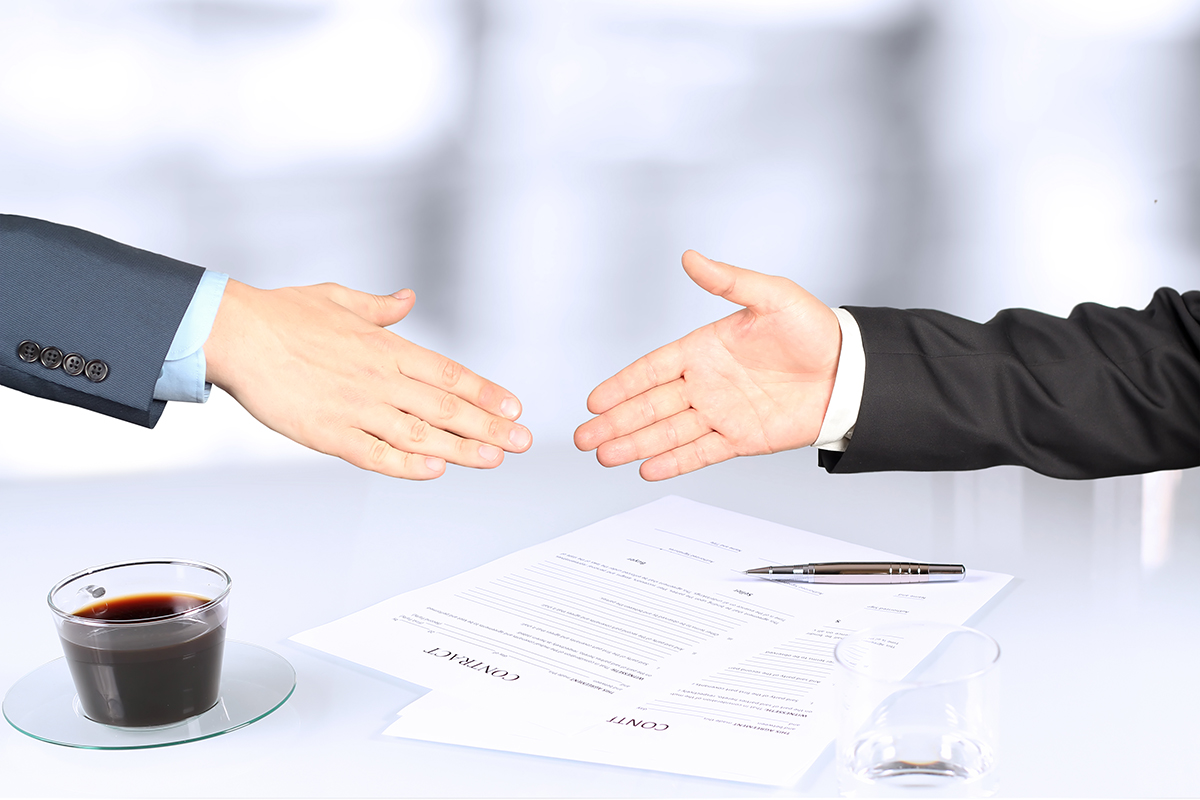Witness statements are written or oral accounts of events or incidents that a person has seen or experienced. These statements are often used as evidence in legal proceedings or investigations. Writing this statement can be a daunting task, especially if you have never done it before. However, having a well-written and comprehensive statement can make a significant difference in the outcome of a case. This article aims to provide an overview of witness statements, their importance, and guidelines for writing them effectively. Additionally, it offers templates that can be used as a guide when creating the statement.
What is a Witness Statement?
A witness statement is a comprehensive account of what a witness observed or experienced regarding an event or incident.
It is a formal document that describes the facts and details of the incident from the perspective of the witness. They are commonly used in legal proceedings, but they can also be used in workplace investigations or other situations where it is important to gather accurate and reliable information.
When are Witness Statements Used?
It is used during criminal investigations as well as investigations conducted by regulatory bodies. In addition to legal proceedings, they may also be used in workplace investigations or other situations where information needs to be collected and analyzed to make a decision or take action.
Legal proceedings
It helps collect evidence before a trial or hearing is conducted. Once completed, it is presented during the trial to provide facts about the case to help prove guilt or innocence. In addition to statements by witnesses who testify for the incident or event, experts such as forensics, doctors, IT experts, accountants, etc. also testify in cases to provide evidence related to their areas of expertise.
For interim applications
A party usually files an interim application before the final judgment in any case. They are typically made in the middle of the case when the parties need to resolve a particular issue before the final judgment is rendered. They can be used in support of interim applications as evidence to support a party’s case. For example, a witness statement might be used to support an application for an interim injunction or an order for specific disclosure of documents. In such cases, the statement would provide the court with the facts and evidence necessary to establish the basis for the application.
Workplace incidents
In the case of an accident or incident in the workplace, the statements can be used to help determine the cause of the incident and ensure that proper safety measures are followed to prevent future occurrences.
Insurance claims
When filing an insurance claim, the statements can provide important information about the circumstances of the incident, helping the insurance company determine the validity of the claim and the appropriate amount of compensation.
Human resources investigations
In cases of harassment, discrimination, or other workplace misconduct, these statements can be used as part of an investigation to gather information and determine the appropriate course of action.
Guidelines for Writing a Witness Statement
Witnesses’ testimony must follow the proper format to be accepted as reliable evidence. The following guidelines should be adhered to for these statements:
- The statement should be written in the first person.
- Only those facts should be included that the witnesses personally know to be true. Do not include speculation or assumptions.
- The witness should not give their opinions unless they are experts in a particular discipline.
- Events in the statement should be expressed in chronological order.
- Claims made in the statement should be supported by documentary evidence.
- Paragraphs should be numbered to simplify referencing.
- The statement should be written on a single side of A4 paper.
- The document should be typed in black. Its content should have a left margin of 35 mm.
- The document should be single-spaced and consecutively numbered.
How Do I Write a Witness Statement?
The following section explains how to make a witness statement in several steps:
Step 1: Header
The first step is to write the title – “WITNESS STATEMENT” – of the case and provide the court with the receipt number, otherwise known as the “case number.” The title section should be written in capital letters. A template must be labeled with a specific name, such as “Case #1194″, for example. The applicant’s or proprietor’s name, the number of the opposition or cancellation (if applicable), and, if possible, the name of the defendant or applicant for cancellation, may also be included in the header.
Step 2: Identify the witness
The witness should identify themselves as a “witness.” The statement contains a section explaining the witness’s name, address (private or business), occupation, company name, and title in the company (if applicable). In addition, the witness should provide a brief introduction to describe their qualifications and relevance to the case.
Step 3: Body of the statement
provide a detailed account of the incident next. The statement must be as factual and straightforward as possible. The witness should mention only those details that they can recall about the event in question.
Some of the details to cover in this section are:
- Give some context: Give context to the witness’s statement. This includes stating the location of the occurrence (city/county or state/country), the time and date of the occurrence in total, a summary of the event, and a list of all people present (by name and relationship to the case).
- Location of the witness: The witness should state where they were at the time of the incident and where they went immediately afterward. They can also mention what they were doing at that time.
- Record the statement: Next, give a detailed account of what the witness saw and heard, if any. The witness should provide details of what happened and describe everything seen in chronological order. Again, as much detail as possible should be provided to support the witness’s statement. Supporting documentary evidence should also be included in this section. Documentary evidence, such as photographs or medical reports, must be attached as well. The witness should use plain language to describe the event.
Step 4: Statement of truth
A statement of truth is a declaration included in a witness statement or any other legal document that confirms that the information presented in the document is true to the best of the knowledge of the person making the statement. This statement is usually placed at the end of the witness statement and signed by the witness or the person making the statement to declare that the information presented in the statement is true and accurate.
In some legal proceedings, it may be necessary for the person making the statement to swear or affirm that the information presented in the statement is true, and a statement of truth may be used in place of an oath or affirmation.
Step 5: Date and signatures
The witness should sign their statement. The witness must also date and stamp the document with their correct signature.
Disclaimer
The statement of truth ensures that individuals refrain from intentionally providing misleading or wrong information. The consequences of violating it are being held in contempt of court, which is legally punishable either by a fine or two years imprisonment.
Categories of Witnesses
Some of the common categories of witnesses are the following:
- Eyewitnesses: These are individuals who have seen or observed an event or incident firsthand and can testify to what they saw.
- Expert witnesses: These are individuals who have specialized knowledge or expertise in a particular field or subject matter relevant to the case and are called to provide their professional opinion or analysis.
- Character witnesses: These are individuals who are called to testify about the character of a defendant or witness. They may be asked to provide information about the individual’s reputation for honesty, trustworthiness, or other relevant character traits.
- Lay witnesses: These are individuals who are not experts in a particular field but may have relevant information or personal knowledge of the events in question.
Witness Statement Template
Various templates can be used to record the statements. Several templates are available on this website that are customizable and easy to use:


Tips for You
Before making a statement as a witness, it is vital to ensure that the information is as accurate as possible. Below are some valuable tips to consider when drafting the statement:
Ask for estimates
When answering questions in the statement, the witness should provide estimated times, distances, and numbers if they are unsure. They may forget some of the details when making their statements. Therefore, to make sure that they have recorded all of the details in their original statement, they should be given time to make a second statement where they are asked to confirm it. For example, if a witness is asked to give an estimation of time or distance, they should be asked a few times to provide an accurate answer.
Draw a rough diagram
If a witness has difficulty describing what happened, they can draw a rough diagram of where the incident took place. This will help clarify the statement and accurately describe what happened.
Review the statement
After the statement has been written, it should be reviewed thoroughly to ensure that it is factual, accurate, and transparent. If anything is unclear, the witness should be asked to explain the details in more detail.
Releasing copies of a witness statement
Releasing copies of the statement means providing copies of the statement to other parties involved in the legal proceeding or to their representatives. In some cases, these may be confidential and not released to the public, but in other cases, they may be provided to the parties involved in the case or made available to the public.
When it is released, it becomes part of the court record and can be used as evidence in the legal proceeding. Other parties may use the statement to prepare their case or to challenge the witness’s testimony during cross-examination.
Key Takeaways
- A witness statement has the same legal value as a witness giving oral testimony. It is used by the judges to reach decisions and affects the outcome of cases.
- It satisfies the burden of proof on the balance of probabilities in civil cases. In criminal cases, this statement highlights the facts of the case, which are free of bias and not opposed to or in support of any of the involved party’s claims on the case.
- Witnesses give information of their own free will. The judge decides whether or not they think it is necessary and, if so, when they want the witness to testify.
- The witness’s statement should reflect what they have seen or heard rather than make false statements against someone.




